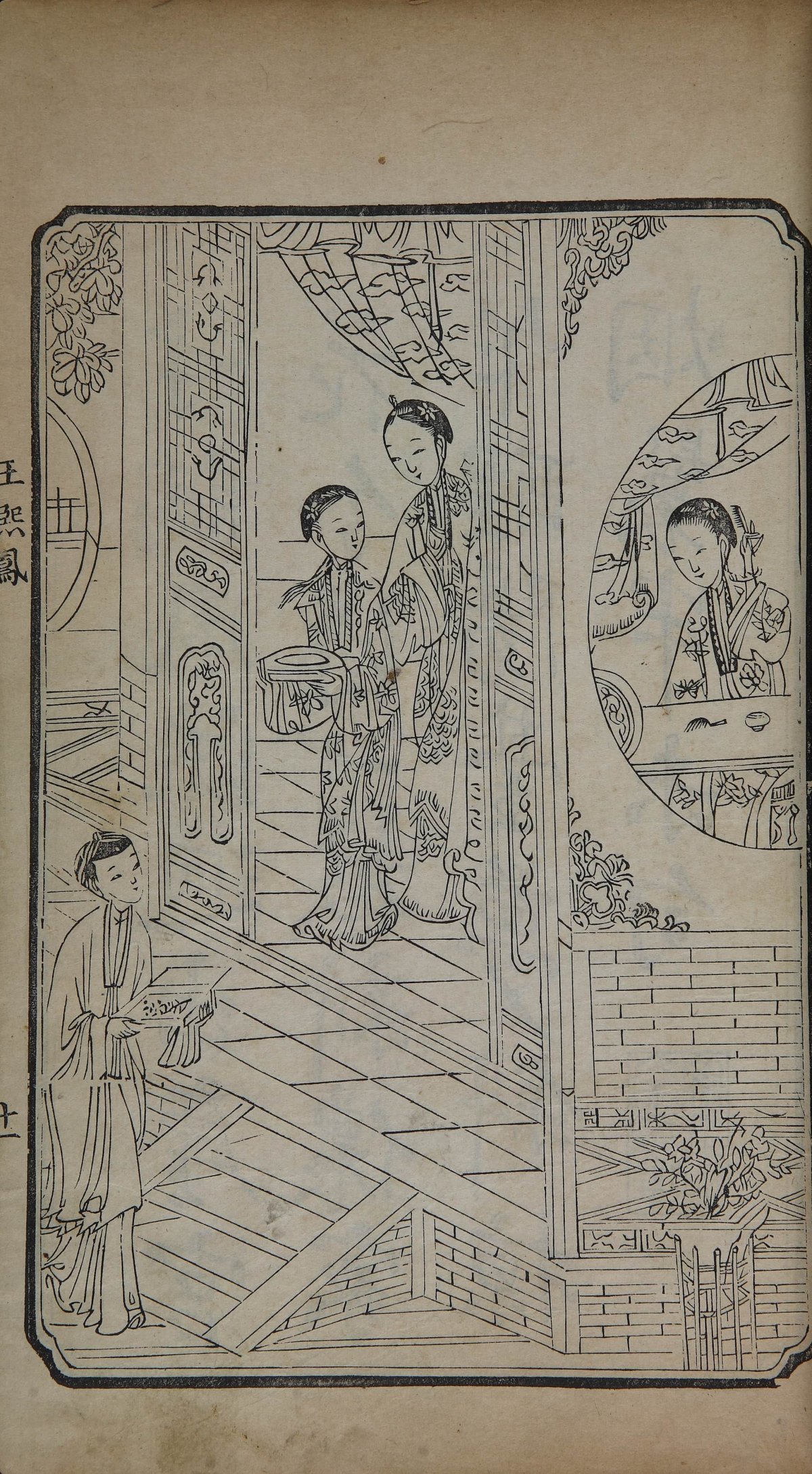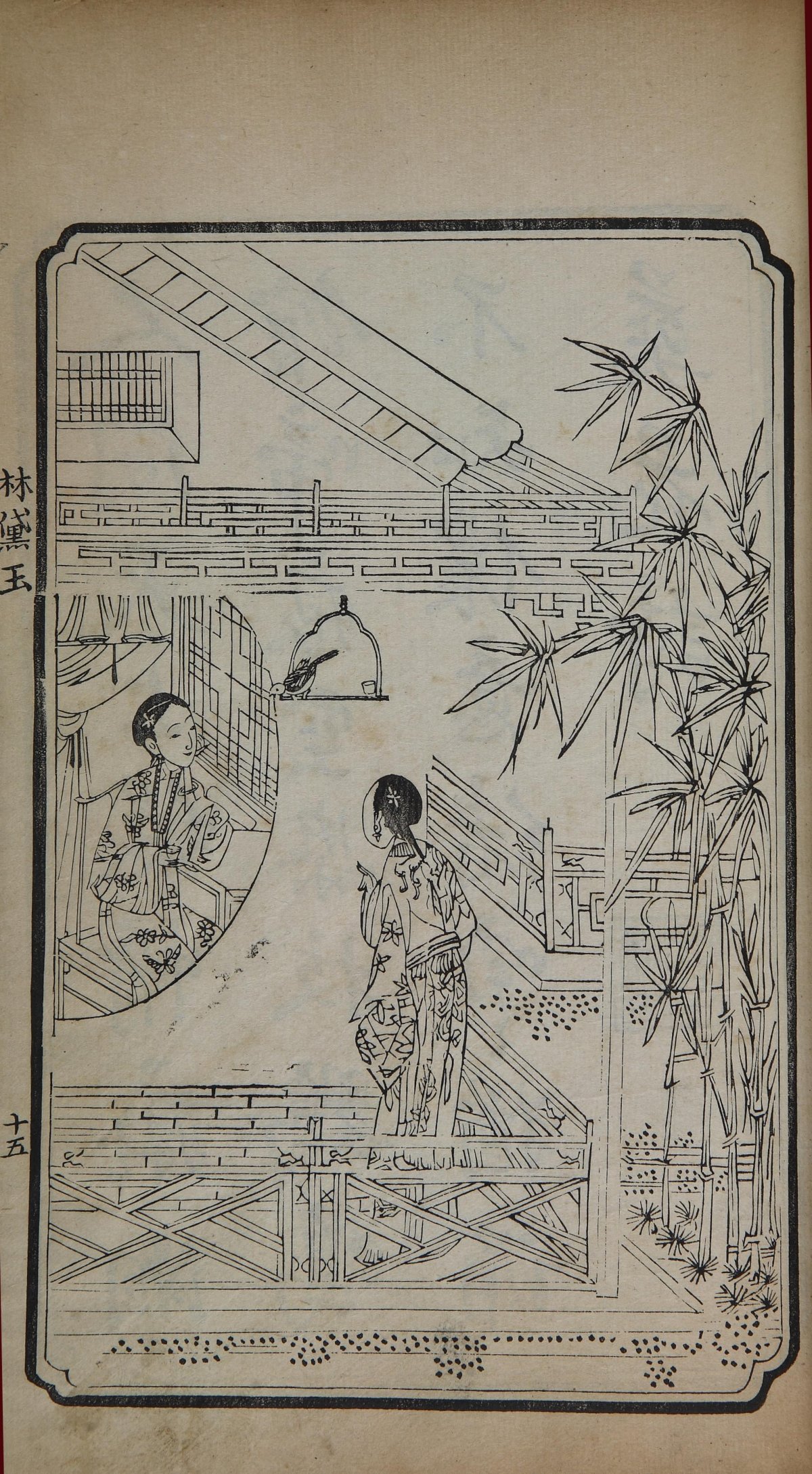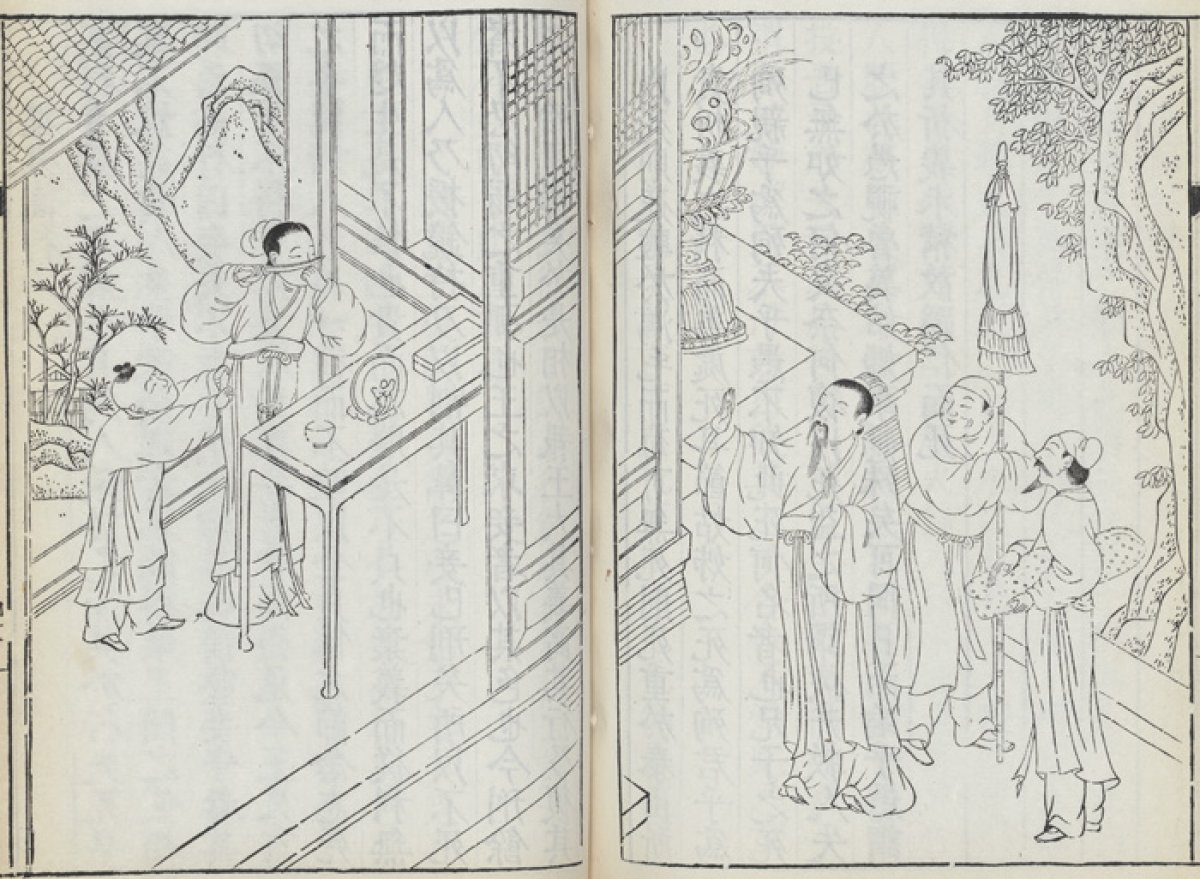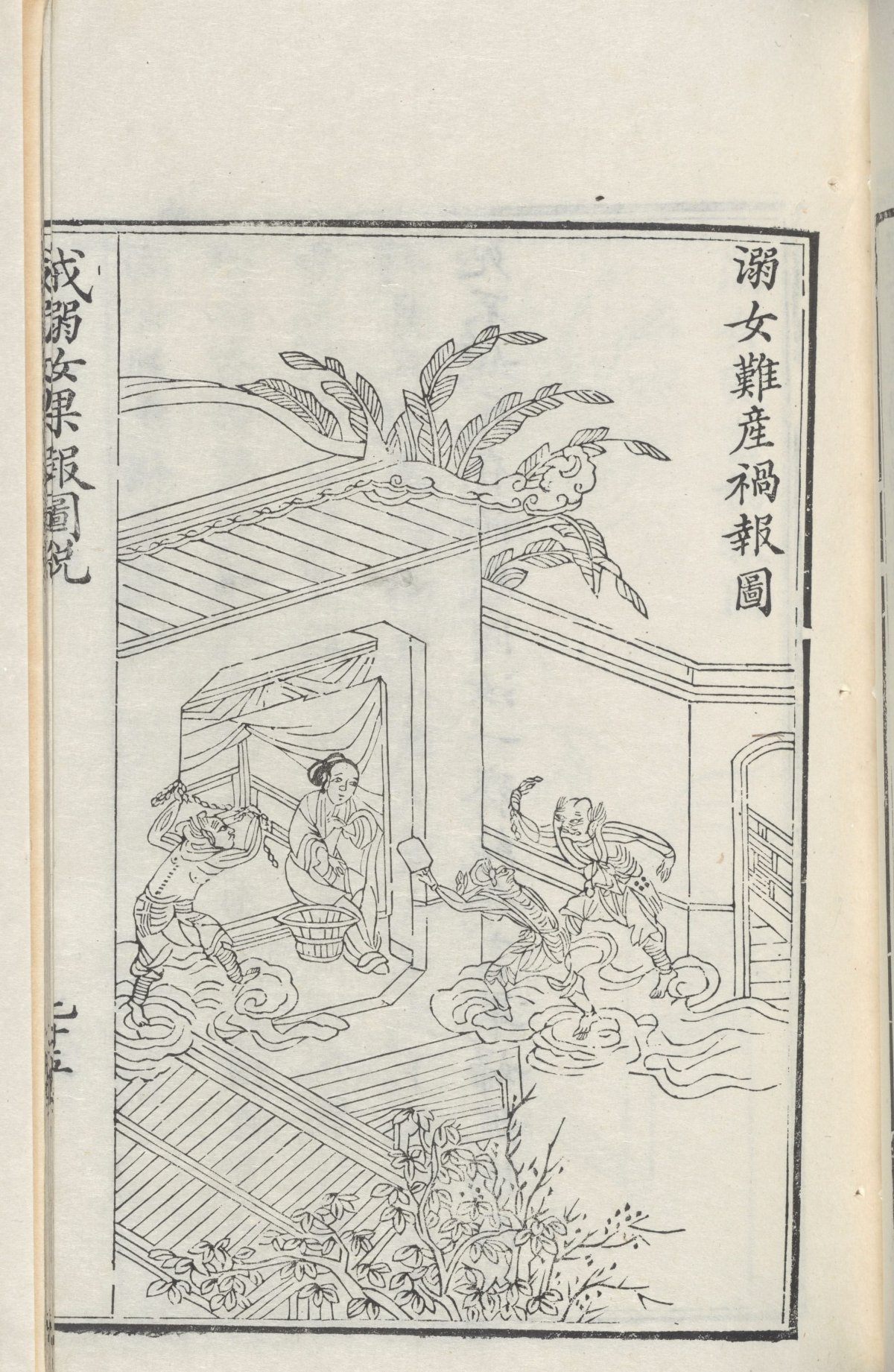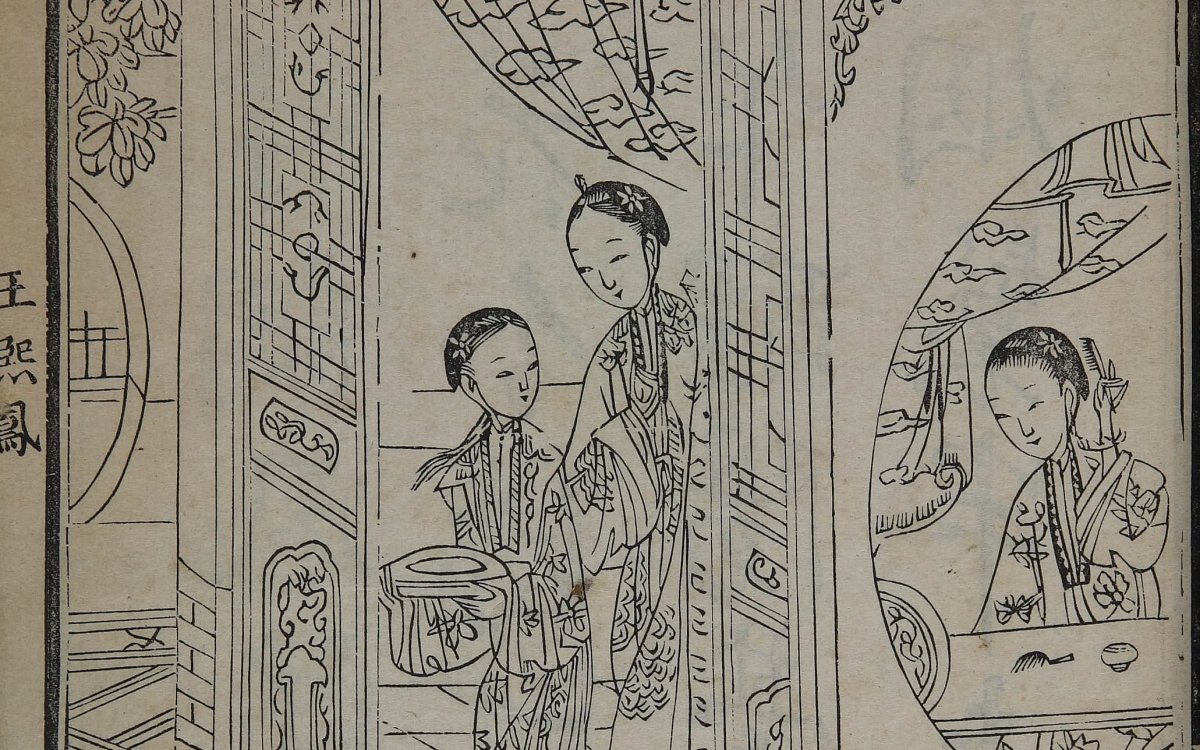
The Story of the Stone (Dream of Red Mansions), Suzhou: Book Room of Collected Literature 1791, National Library of China
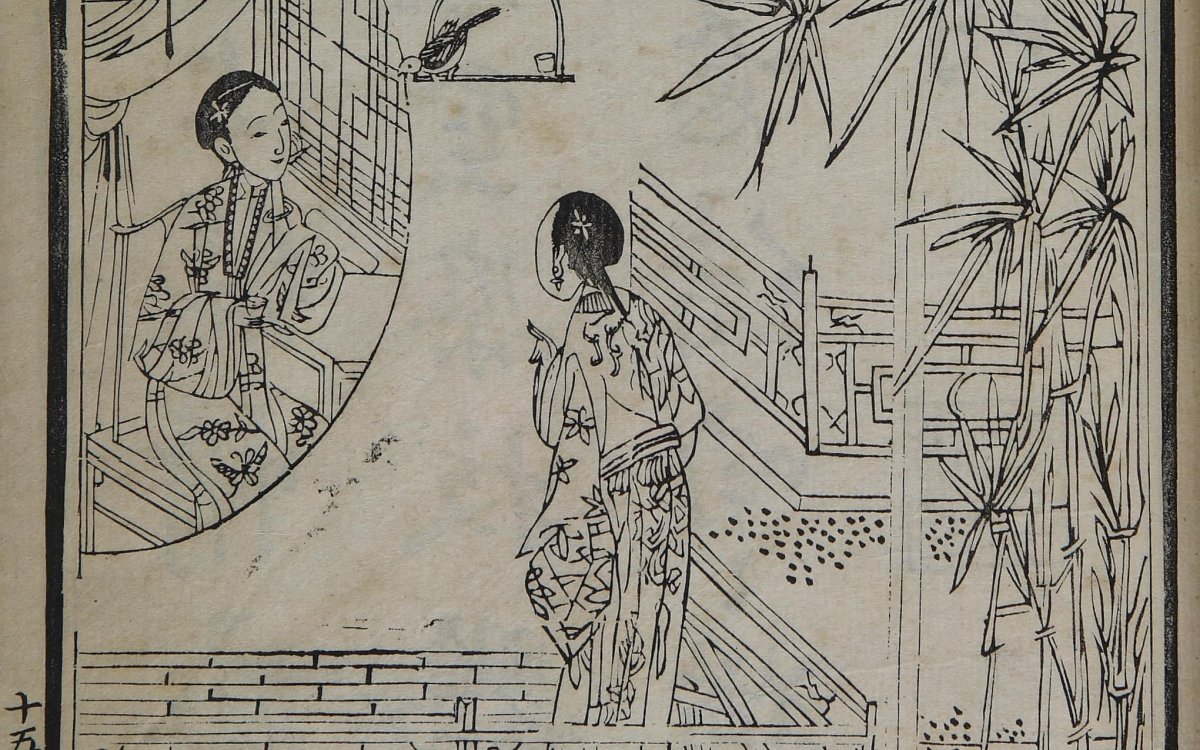
The Story of the Stone (Dream of Red Mansions), Suzhou: Book Room of Collected Literature 1791, National Library of China
The Story of The Stone is regarded by many as the greatest example of Chinese literature, and as one of the masterpieces of world literature. It was written in the eighteenth century by Cao Xuequin, and circulated in manuscript form until it was printed with illustrations in 1799. It is written in high-class vernacular, rather than classical Chinese, and contains a considerable amount of poetry. The story is considered by many to be semi-autobiographical, as Cao, like his protagonist Baoyu, was born into a wealthy Manchu family with close links to the Manchu court in the seventeenth century, but experienced a decline in their fortunes and fell out of favour with the Manchu court in the eighteenth century.
The Story tells of Bayou, a sentient stone who asked a Buddhist monk and a Daoist to reincarnate it so that it could live in the mortal realm. A central plotline is the relationship between Baoyu and his two female cousins, the virtuous and prim Lin Daiyu (the incarnation of a magical flower) and the capable, intelligent Xue Baochai. Throughout the story, Baoyu and Daiyu have to learn a lesson about the danger of attachment. There are various levels on which to view the story:
- as love story
- as an exploration of the transient nature of human existence
- as a mystic story on Buddhist themes of attachment, enlightenment and karma
- as a psychologically realistic biography
- as a chronicle of the morals and expectations of upper Chinese and Manchu society
The story contains a vast number of characters (30 main and over 400 minor), from all walks of life, which allows Cao to portray most aspects of Chinese social life, family politics, and the catalogue of qualities believed to comprise an ideal young woman.
The Story of The Stone is regarded by many as the greatest example of Chinese literature, and as one of the masterpieces of world literature. It was written in the eighteenth century by Cao Xuequin, and circulated in manuscript form until it was printed with illustrations in 1799. It is written in high-class vernacular, rather than classical Chinese, and contains a considerable amount of poetry. The story is considered by many to be semi-autobiographical, as Cao, like his protagonist Baoyu, was born into a wealthy Manchu family with close links to the Manchu court in the seventeenth century, but experienced a decline in their fortunes and fell out of favour with the Manchu court in the eighteenth century.
The Story tells of Bayou, a sentient stone who asked a Buddhist monk and a Daoist to reincarnate it so that it could live in the mortal realm. A central plotline is the relationship between Baoyu and his two female cousins, the virtuous and prim Lin Daiyu (the incarnation of a magical flower) and the capable, intelligent Xue Baochai. Throughout the story, Baoyu and Daiyu have to learn a lesson about the danger of attachment. There are various levels on which to view the story:
- as love story
- as an exploration of the transient nature of human existence
- as a mystic story on Buddhist themes of attachment, enlightenment and karma
- as a psychologically realistic biography
- as a chronicle of the morals and expectations of upper Chinese and Manchu society
The story contains a vast number of characters (30 main and over 400 minor), from all walks of life, which allows Cao to portray most aspects of Chinese social life, family politics, and the catalogue of qualities believed to comprise an ideal young woman.
1. Ask your students to name writers of classic literature, whose stories have retained enduring appeal over centuries. As a class, discuss what qualities these stories have that continue to attract audiences.
Use the following questions to shape further discussion, as a class or in small groups:
- Which, if any, of these themes also appear in The Story of the Stone. What does this tell us about the universal human experience across cultures?
- What can we learn about a society from its literature?
- Can we consider literature to be valid historical documents? Why / why not?
- What biases or other potential problems do we need to consider when using literary texts as historical sources?
- The National Library of China has an illustrated copy of The Story of the Stone that was printed in 1791. What can we learn from the physical book itself, as opposed to the story it holds?
2. Ask students to write a report, using both the novel itself and secondary sources, assessing what The Story of the Stone can tell us about the Qing of the late 1700s, particularly in relation to:
- Chinese social structure and social mores
- Chinese and Manchu values, especially in relation to women
- family politics
- the influence of religion
Students should further assess whether the continuing popularity of the novel has a correlating continuance of these features in Chinese society
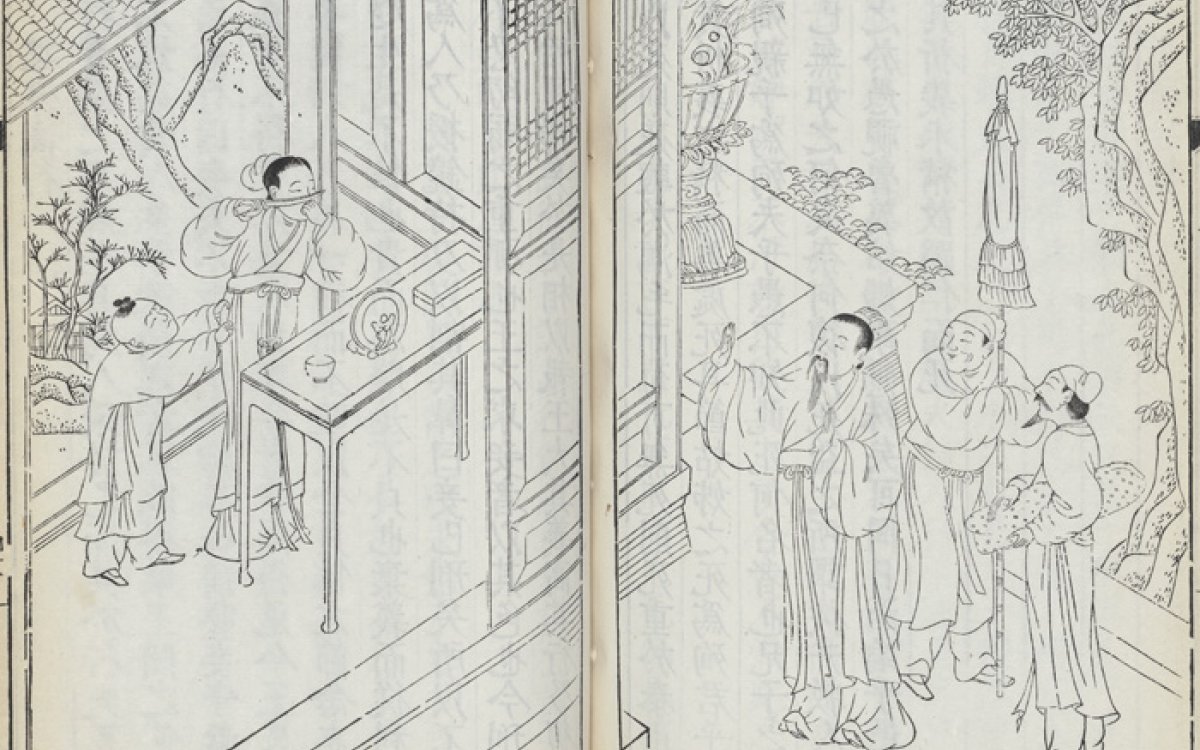
Liu, Xiang, 77?-6? B.C & 劉向, 77?-6? B.C & Wang, Daokun, 1525-1593 & Qiu, Ying, approximately 1494-approximately 1552 & Chinese Rare Book Collection (Library of Congress) & 汪道昆, 1525-1593 & 仇英, approximately 1494-approximately 1552. (1779). Lie nü zhuan : shi liu juan / Wang Daokun zeng ji ; Qiu Ying hui tu. [China : s.n.] https://nla.gov.au/nla.cat-vn3792445
Models of conduct were laid down under the Qing that prescribed appropriate behaviours, which were viewed as fundamental to maintaining social order and, therefore the integrity of their way of life. Though these models existed for both men and women, the expectations of women were particularly exacting.
Literacy among women in elite families was quite high under the Qing, and there was, therefore, a corresponding high demand for reading materials. The literature available reflected the values and standards of the times. In many examples, self-sacrifice was highlighted as the finest of acts a woman could commit. Women who put the comfort and safety of their male family members ahead of their own were highly honoured.
A text with the name Biographies of Women first appeared in Han dynasty, written by Liu Xiang (77–76 BC). Wao Daokun used this as the basis for this expanded work. The printed edition was illustrated by Qui Ying (1494–1552), a famous court painter. The National Library of Australia’s 1779 edition is highly valued because it is thought to have been printed with woodblocks prepared under the Ming.
Models of conduct were laid down under the Qing that prescribed appropriate behaviours, which were viewed as fundamental to maintaining social order and, therefore the integrity of their way of life. Though these models existed for both men and women, the expectations of women were particularly exacting.
Literacy among women in elite families was quite high under the Qing, and there was, therefore, a corresponding high demand for reading materials. The literature available reflected the values and standards of the times. In many examples, self-sacrifice was highlighted as the finest of acts a woman could commit. Women who put the comfort and safety of their male family members ahead of their own were highly honoured.
A text with the name Biographies of Women first appeared in Han dynasty, written by Liu Xiang (77–76 BC). Wao Daokun used this as the basis for this expanded work. The printed edition was illustrated by Qui Ying (1494–1552), a famous court painter. The National Library of Australia’s 1779 edition is highly valued because it is thought to have been printed with woodblocks prepared under the Ming.
The National Library of Australia’s copy of Biographies of Women is about 100 years older than a copy held by the National Library of China. What differences can you see when we compare the two? What assumptions can we make based on these differences?
Biographies of Women was reproduced and expanded after thousands of years. What can this tell us about Chinese culture and values?
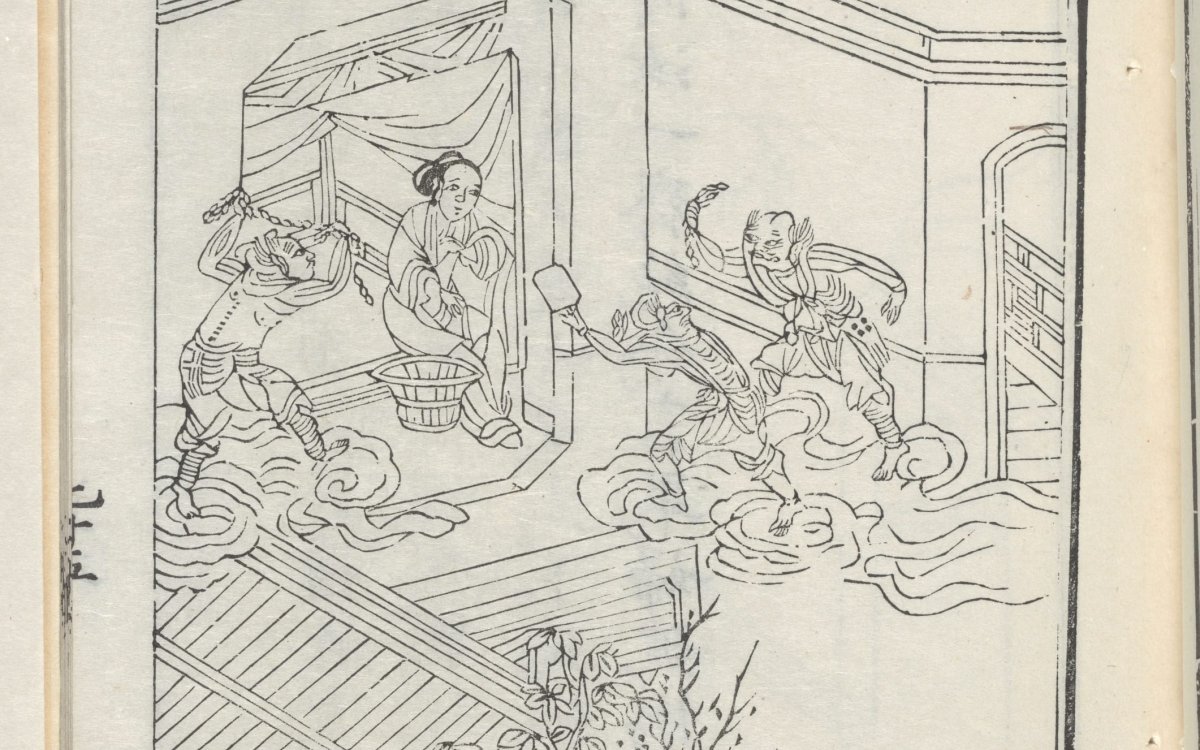
Ye, Wenlan & 葉文瀾. (1864). Jie ni nü guo bao tu shuo / Ye Wenlan bian. Xiamen : Bao shan tang http://nla.gov.au/nla.obj-59030077
Illustrated Tales of Retribution for Drowning Daughters is morality book. This type of book was printed by the elite classes in a philanthropic effort to help the less fortunate reform their behaviour, which in turn garnered respect and merit for the philanthropist. This example attempts to discourage people from committing female infanticide by offering example of the punishment they can expect if they do so.
Ye Wenlan’s preface draws on the moral values of the time, which prized ‘good’ behaviour. He reminds readers that ‘Retribution is obvious; Heaven’s net lets nothing through.’[1] Charged with reinvigorating the campaign to stop the killing of baby girls, Ye gathered a series of sixty tales from earlier books against the practice. While Ye’s preface is in classical prose, the tales are written in colloquial language. He added striking illustrations to reinforce the messages in the text, seeking to make the message accessible to even the least educated in Qing society.
In one example, a woman had four daughters over a series of years, and drowned each of them in turn, while her husband did nothing to prevent her. When the woman eventually had a son, they were satisfied, but at midnight on the night of his birth, the baby boy disappeared. The woman then saw four small ghosts rise up, and recognised that they were the spirits of her daughters come to punish her. She screamed violently for five days, until blood streamed from her eyes, nose, mouth and ears, after which she died.
Conversely, the book also includes tales of people who were rewarded for saving female babies. In particular, there is the story of the childless 80 year old prefect of Changsha, who was gifted with a son to carry on his family line. The old man was promised that the son would pass his civic examinations and also become prefect of Changsha, which he did.
Illustrated Tales of Retribution for Drowning Daughters is morality book. This type of book was printed by the elite classes in a philanthropic effort to help the less fortunate reform their behaviour, which in turn garnered respect and merit for the philanthropist. This example attempts to discourage people from committing female infanticide by offering example of the punishment they can expect if they do so.
Ye Wenlan’s preface draws on the moral values of the time, which prized ‘good’ behaviour. He reminds readers that ‘Retribution is obvious; Heaven’s net lets nothing through.’[1] Charged with reinvigorating the campaign to stop the killing of baby girls, Ye gathered a series of sixty tales from earlier books against the practice. While Ye’s preface is in classical prose, the tales are written in colloquial language. He added striking illustrations to reinforce the messages in the text, seeking to make the message accessible to even the least educated in Qing society.
In one example, a woman had four daughters over a series of years, and drowned each of them in turn, while her husband did nothing to prevent her. When the woman eventually had a son, they were satisfied, but at midnight on the night of his birth, the baby boy disappeared. The woman then saw four small ghosts rise up, and recognised that they were the spirits of her daughters come to punish her. She screamed violently for five days, until blood streamed from her eyes, nose, mouth and ears, after which she died.
Conversely, the book also includes tales of people who were rewarded for saving female babies. In particular, there is the story of the childless 80 year old prefect of Changsha, who was gifted with a son to carry on his family line. The old man was promised that the son would pass his civic examinations and also become prefect of Changsha, which he did.
In the preface to the tales, Ye Wenlan reminds readers that in the year 1654 an imperial edict strictly forbidding the drowning of female daughters was promulgated throughout the empire. How does this knowledge affect preconceptions about the Chinese practice of killing female babies? (Students should identify that it is clear that this practice didn’t begin with the one-child policy)
Given the supernatural element of the stories, it is safe to presume that they are fictional. What, then, can we learn from this text as a source of historical information? Would you agree with the presumption of fiction? How does this compare with categorisation of texts like the Christian Bible, Islamic Qu’ran, the Jewish Torah, the Buddhist Tripitaka?
1. Ask students to imagine that they have been tasked with the job of convincing Qing Chinese not to kill their daughters. Using what they know of Qing culture to shape their strategy, students should create a booklet or poster that they could distribute.
OR
Students should imagine that they are re-developing this book for a contemporary audience. What would you need to change? How would you illustrate it differently for twentieth century audiences? Would you still use religious and superstitious exhortations, or another strategy?
Female infanticide was one of the great moral topics in Chinese society during the Qing rule. If you were inclined to write a moral treatise for contemporary times, what might be an appropriately comparable subject? How would you approach it?
